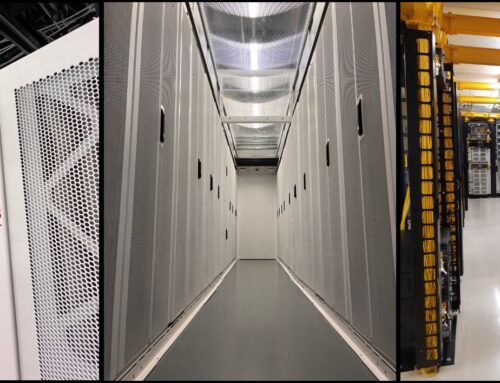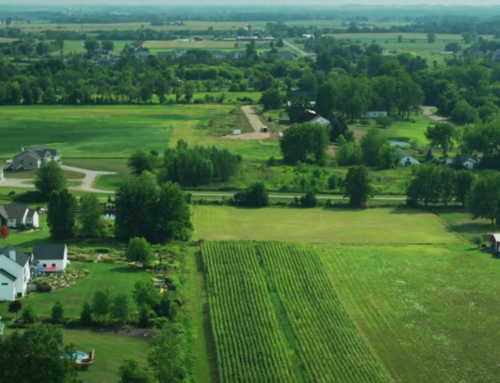
As fibre broadband expands its reach into communities across Canada, it opens the door for transformative technologies that rely on high-speed, low-latency connectivity. The capacity-intensive applications of Artificial Intelligence (AI), Machine Learning (ML), Edge Computing, the Internet of Things (IoT), and Quantum Computing are no longer distant possibilities; they are reshaping our world. With fibre as the backbone, these technologies have the potential to revolutionize business operations, enhance public services, and improve our everyday life.
AI and Machine Learning: Powering Innovation
Across industries, from healthcare to manufacturing, AI and ML are increasingly critical in automating tasks, making predictions, and optimizing systems. However, these technologies are data-hungry, requiring massive amounts of information to train models and make accurate decisions.
Fibre networks, with their unparalleled bandwidth, make it possible to transmit and process the vast datasets required for AI and ML applications. A study by Accenture highlights that AI could boost profitability by an average of 38% across 16 industries by 2035. Without reliable, high-capacity internet, the benefits of AI would be limited to major metropolitan areas. Fibre infrastructure ensures that Canada’s rural communities can participate in AI-driven innovations.
Edge Computing: Bringing Data Closer
Edge computing refers to the practice of processing data closer to its source, reducing latency and bandwidth demands on centralized cloud systems. With the deployment of fibre broadband, edge computing gains the infrastructure needed to operate efficiently, enabling faster response times for critical applications such as autonomous vehicles, healthcare, and smart cities.
According to a study by the International Data Corporation (IDC), global spending on edge computing is expected to reach $228 billion by 2024 and $378 billion by 2028, driven by demand for real-time data processing across industries. Fibre’s ability to offer ultra-low latency connections is essential to the successful implementation of edge solutions, particularly in rural and underserved areas.
Cloud Computing: The Foundation of Modern Business
Cloud computing has been a key enabler of digital transformation across industries. With cloud-based services, businesses and individuals can access vast computing resources without needing physical infrastructure. The cloud’s reliance on high-capacity networks makes fibre essential in delivering the speeds necessary for seamless access to services such as data storage, software as a service (SaaS), and virtual desktops.
A report from Gartner projects that global cloud spending will grow by 21.7% in 2025, emphasizing the need for robust connectivity to support this shift. Fibre broadband not only ensures high-speed access to cloud services but also enables businesses in remote locations to leverage cloud technologies just as effectively as those in urban centres.
IoT: Connecting the Physical World
From smart homes to industrial automation, the Internet of Things (IoT) is reshaping the way we live and work. IoT connects devices, vehicles, appliances, and sensors, allowing them to communicate and share data. The widespread adoption of IoT depends on fast, reliable internet connections, particularly as the number of connected devices grows exponentially. Cisco estimates that by 2030, there will be 500 billion connected IoT devices. Fibre networks are essential for supporting the massive data throughput and low latency required by these devices, especially as more critical applications, such as remote healthcare monitoring and intelligent transportation systems, come online.
Quantum Networking: The Future of Secure Communication
Quantum networking represents the next frontier of telecommunications, offering unparalleled security through quantum encryption methods. This technology promises to revolutionize data security, making it virtually impossible for malicious actors to intercept sensitive information.
However, quantum networking requires extremely fast, stable internet connections to function.
Fibre broadband, with its ability to support extremely high-speed, low-latency data transmission, is the only viable infrastructure for quantum networks. While quantum networking is still in its infancy, Canada is already investing in the necessary fibre infrastructure to be at the forefront of this revolutionary technology.
Fibre as the Backbone of Innovation
The convergence of these technologies—AI, ML, IoT, Edge and Cloud Computing, and Quantum Networking depends on fibre broadband. Without the high-capacity, low-latency connections provided by fibre, many of these innovations would remain confined to research labs or limited to major urban centres.
The federal government has recognized the importance of fibre infrastructure as a critical enabler for future technologies. Programs like the Universal Broadband Fund (UBF) are helping extend high-speed internet access to underserved areas, ensuring that the benefits of these technologies are accessible to urban and rural Canadians alike.
Conclusion: A Connected Future
As fibre broadband adoption becomes more widespread, it is unlocking the potential for transformative technologies like AI, ML, IoT, Edge and Cloud Computing, and Quantum Networking to flourish. This connectivity is not only improving businesses and services but is also levelling the playing field by helping to bridge the digital divide between Canada’s rural and urban communities. With fibre as the backbone, Canada stands poised to unlock the full potential of these transformative technologies, laying the foundation for a brighter, more connected future beyond our current comprehension.
Sources:




